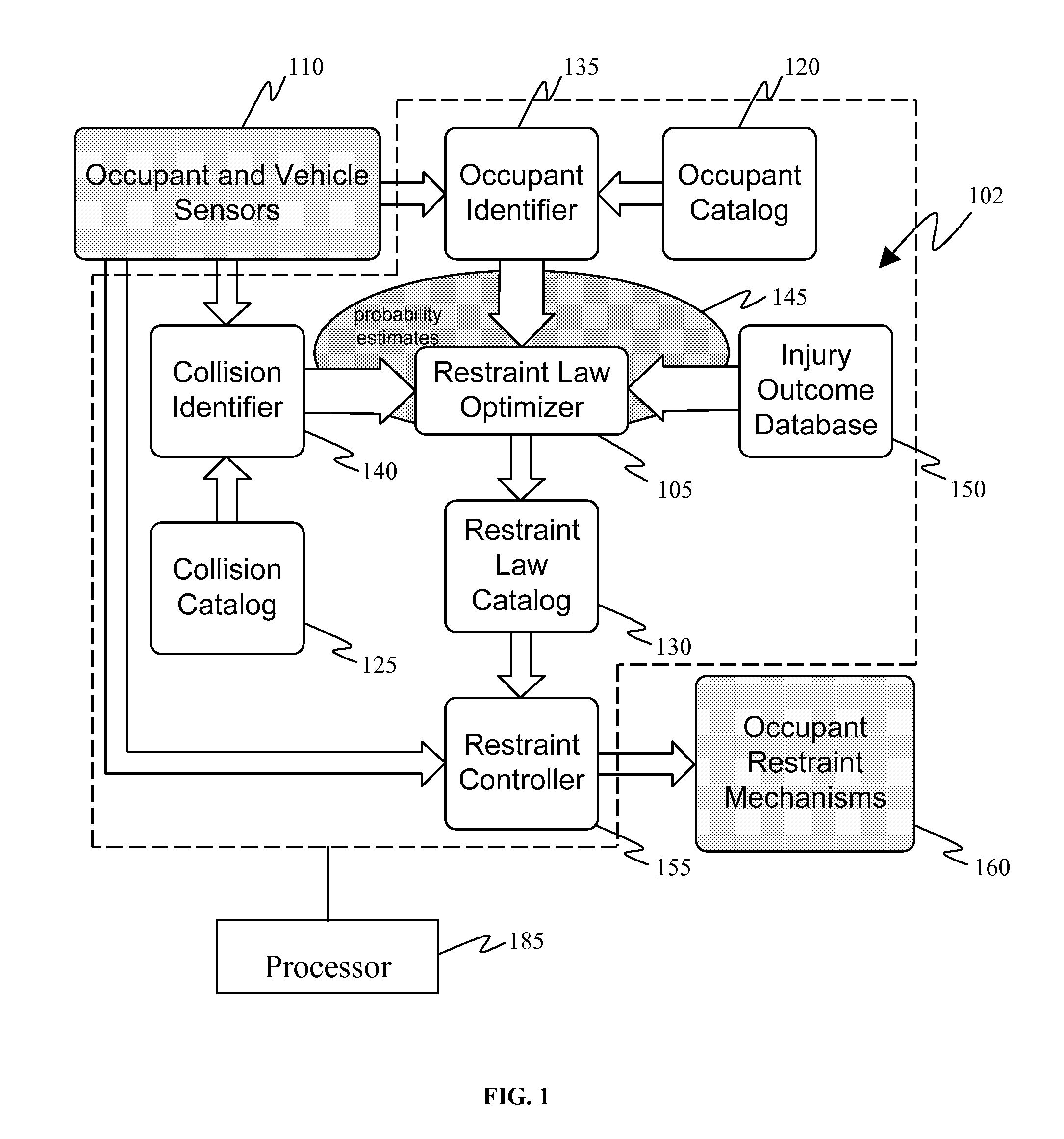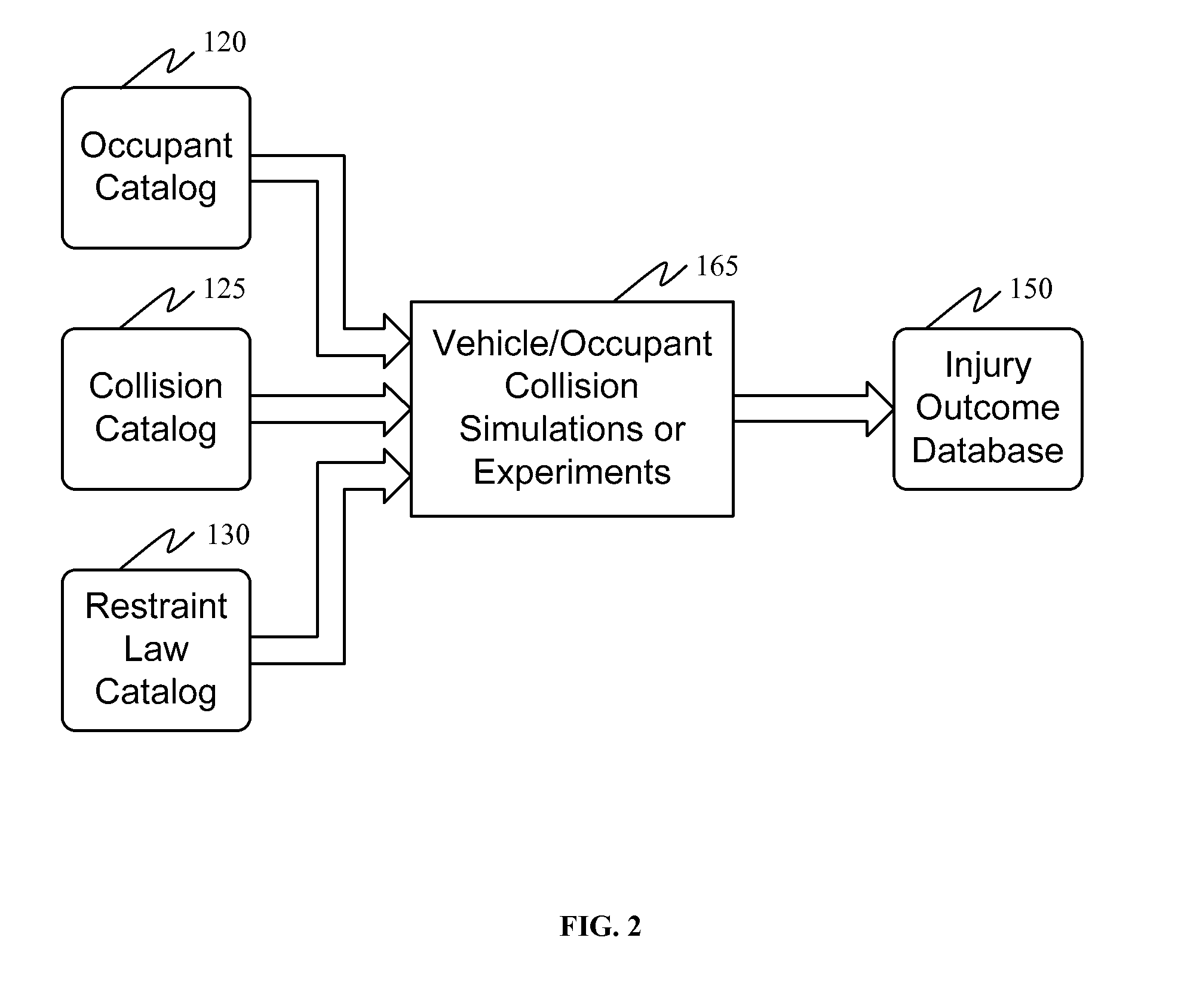System and method for minimizing occupant injury during vehicle crash events
a technology for occupant injuries and vehicle crashes, applied in the direction of pedestrian/occupant safety arrangements, vehicle components, electrical devices, etc., can solve the problems of conventional restraint practices that do not provide any or limited adaptation to crash severity or occupant properties, and the device typically fails to fully address the interaction between the occupants within the vehicle and the internal environment of the vehicle, etc., to achieve the effect of reducing injury
- Summary
- Abstract
- Description
- Claims
- Application Information
AI Technical Summary
Benefits of technology
Problems solved by technology
Method used
Image
Examples
embodiments
[0086]Although the various embodiments of the present invention are mainly described in terms of passenger vehicles, it would be equally applicable to a broad array of control problems. Generally, it is suitable for control problems where the range of possible physical systems (e.g., vehicle, occupant, and posture) is reasonably narrow, the range of possible events requiring special response (ex. collision scenarios) is also reasonably narrow and of a short transient character, and the complexity of the physical system is high enough to make deterministic state estimation impractical. The term “reasonably narrow” simply meaning it could be expressed in a probability density function. An example of such a problem is a fault event controller for industrial machinery. It should be appreciated that the various embodiments are applicable to fields other than occupant restraint. Generally, for example, it may be directed to machine fault detection and selection of “best” palliative action...
PUM
 Login to View More
Login to View More Abstract
Description
Claims
Application Information
 Login to View More
Login to View More - R&D
- Intellectual Property
- Life Sciences
- Materials
- Tech Scout
- Unparalleled Data Quality
- Higher Quality Content
- 60% Fewer Hallucinations
Browse by: Latest US Patents, China's latest patents, Technical Efficacy Thesaurus, Application Domain, Technology Topic, Popular Technical Reports.
© 2025 PatSnap. All rights reserved.Legal|Privacy policy|Modern Slavery Act Transparency Statement|Sitemap|About US| Contact US: help@patsnap.com



